Dear reader: This article contains links to products and services that I may be compensated for, at no extra cost to you.
Fall is an unbeatable season for exploring America’s vast network of awe-inspiring national parks. Why not visit when summer crowds are long gone, wildlife is abundant, and the weather is generally about as pleasant as it could be?
Whether you want to gaze at autumn foliage, peer into active volcanoes, or kayak with alligators, the USA has a national park waiting for you. The choices can be overwhelming, which is why I’ve enlisted the help of a small army of professional travel bloggers to compile this list of the best national parks to visit in fall in the USA.
Since each is awesome in its own way, I’ve ordered them geographically from west to east. For even more ideas, you can consult this list of US national parks by state. Now, let’s dive in!
Table of Contents
1. Volcanoes National Park
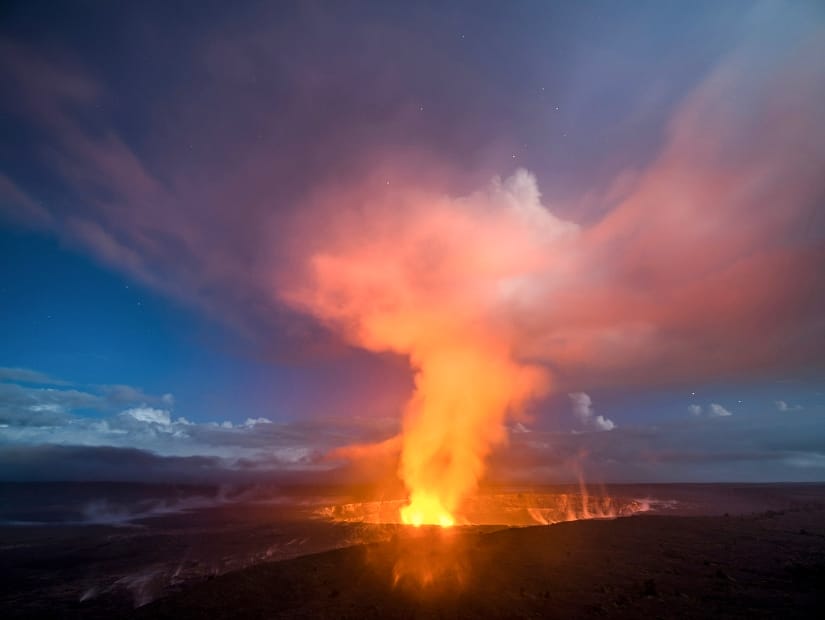
In the heart of the Pacific Ocean, on the Big Island of Hawai’i, lies the dramatic and geologically active Volcanoes National Park. This is a unique gem highlighting the primal process of creation and destruction with a constantly changing landscape of unusual lava formations and dense tropical jungle.
Home to two volcanoes, the park centers on the Kilauea Caldera – an active volcano that last erupted in 2018, destroying homes and creating 875 acres of new land. Driving the popular Crater Rim Road around the Caldera is a must-do, followed by a journey down Chain of Craters Road to Holei Sea Arch.
The biggest draws of visiting Volcanoes National Park in the fall is the perfect weather and lack of crowds. Oppressive summer heat is long gone, and the park’s vast hiking trail system is free of gridlock.
Our favorite fall activity is to hike the overnight Puna Coast Trail loop, an 18-mile adventure across desolate lava fields intermingled with lush tropical forest and flanked by sea cliffs. The colder temps and intermittent rain breeds a parallel to a Mid-west fall, except you are in Hawai’i!
–Ryan of The Nutty Trekkers
Looking for the perfect camera for travel? I always use this mirrorless one and these travel lenses.
2. Crater Lake National Park
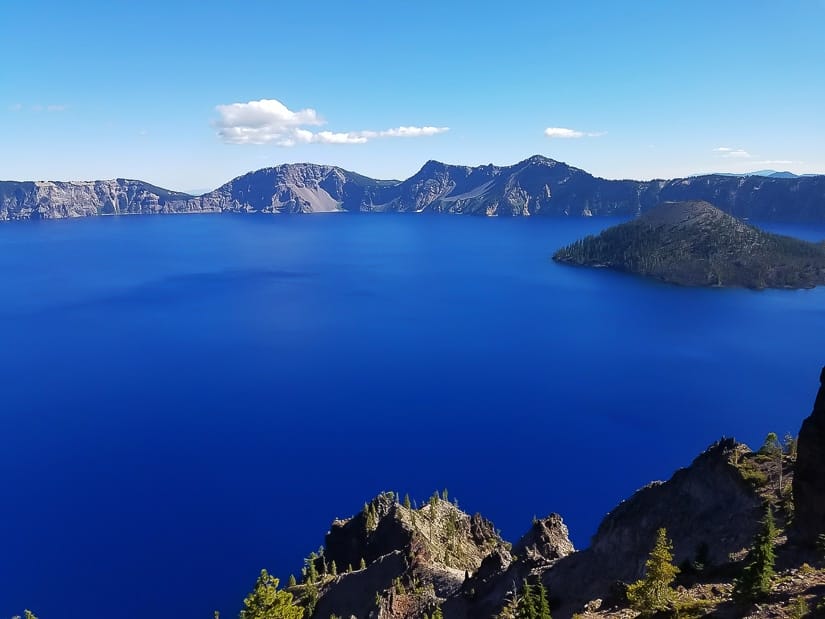
Set atop the blown-out volcanic crater of an enormous volcano, Crater Lake National Park is a natural masterpiece in the State of Oregon. The deepest lake in the United States is a shade of blue that can only be fully appreciated with the naked eye.
The sheer magnitude of the lake can only be realized with a visit, best done by taking the 33-mile long Rim Drive around the lake. It is truly a jaw-dropping masterpiece of nature.
Crater Lake National Park is an ideal fall destination due to the pleasant weather and lack of crowds. Incredibly heavy snowfall means the park is inaccessible to most visitors in the Winter and early Spring. Warmer months are pleasant in Oregon’s Cascade mountains, but I found that Fall is ideal at Crater Lake.
Temperatures range from pleasant to cool, and the crowds are much thinner. Driving around the lake is more enjoyable when not competing with dozens of other tourists at every viewpoint.
–John Paul of The Hangry Backpacker
3. Yosemite National Park

Located in the heart of California’s Sierra Nevada mountains, Yosemite National Park is a designated UNESCO World Heritage Site. It is also home to Yosemite Falls, one of the tallest waterfalls in the world, plunging from an astonishing 2,425 feet. It is without question one of the best national parks near Los Angeles!
The park’s steep granite mountains, deep valleys and giant sequoias attracts visitors from all over the world. The heart of the park, Yosemite Valley, boasts incredible views and hikes for all levels, whether you want to hike all the way to the top of Yosemite Falls, check out the incredible sequoia trees or make your way to the iconic Glacier Point.
Come to Yosemite in early to mid-fall when colors begin to change, crowds recede and the first snow is about to blanket the iconic Yosemite Valley.
Fall is a popular time to take photos in Yosemite Valley and enjoy the park without having to share it with thousands of tourists. But don’t forget that fall is also when Yosemite gets much cooler temperatures and certain entrances (such as the Tioga Pass on the eastern side of the park) become closed after the first snowfall.
–Daria of The Discovery Nut
4. Joshua Tree National Park
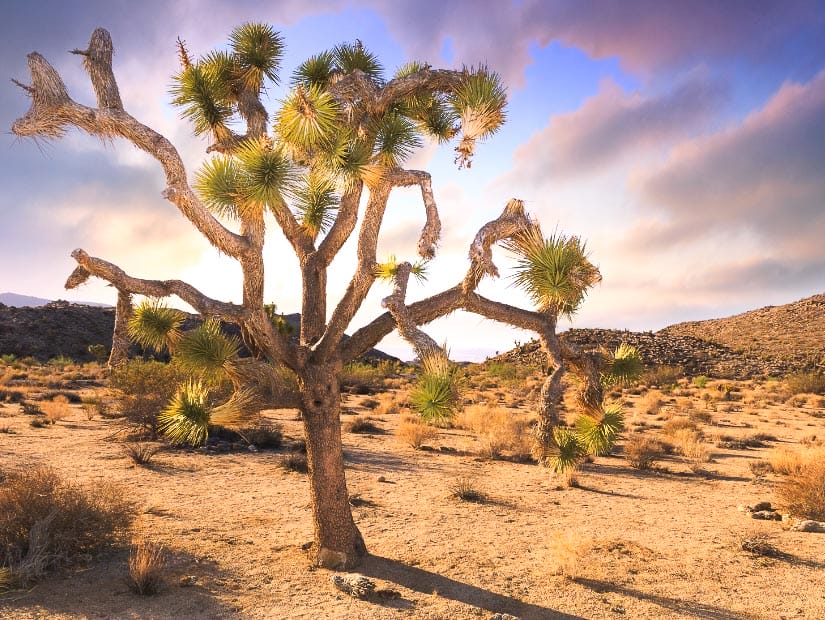
Joshua Tree National Park is one of Southern California’s two great desert national parks. Located partly on the Mojave Desert and partly on the Colorado Desert, Joshua Tree features spectacular masses of giant boulders and large numbers of the namesake Joshua trees.
Joshua Tree is particularly visited for its hiking trails and Old West sites, but you can also drive up to Keys View for panoramas over the Coachella Valley, visit a fan palm oasis, photograph the dramatic desert vistas, and stargaze at night, making for a perfect day at Joshua Tree National Park.
Fall is an especially opportune time to visit Joshua Tree National Park. With temperatures starting to cool down in late September/early October, you’ll find it easier to tackle longer desert hiking trails in the park.
Plus, trails are less crowded than in the spring. Fall is also the time rock climbing season kicks off, and you can sign up for a class. We loved rock-scrambling our way up to the top of the flatter boulder masses!
We also enjoyed camping at Joshua Tree in the fall: no temperature extremes to worry about and no crowds, and great dark skies at night for stargazing!
–Dhara of Roadtripping California
5. Glacier National Park

Glacier National Park is an amazing spot for those looking to enjoy stunning fall foliage as well as fewer crowds in one of America’s most famous national parks. Located in northwest Montana, this Rocky Mountain haven has changing leaves (visitors shouldn’t miss the tamarack trees, which turn a lovely gold during the autumn months).
The Going-to-the-Sun Road is still open through September, and it offers iconic views of the nearby glaciers with a variety of colors.
I grew up right by Glacier National Park, and some of my fondest memories of visiting are when my parents would take us there in the fall to avoid the onslaught of people during July and August.
Not only did it allow us to enjoy hiking in the cooler weather, but it also helped to feel more like the park was our own and to truly experience the point of being out in nature.
Fun Fact: Glacier National Park is connecting to adjacent Waterton Lakes National Park in Canada, together forming the Waterton-Glacier International Peace Park!
–Alex Schnee of Alex on the Map
Here are my essential items for traveling. What are yours?
6. Zion National Park

Zion National Park is in the southwest corner of Utah and the most popular of the five national parks in the state. It’s got a small woodsy section, but the main attraction is the towering canyon walls and endless canyon views that really draw people in.
Angels Landing and the Narrows are the top two things to do in Zion, for sure but there are tons of other amazing hikes like Hidden Canyon, Canyon Overlook, Observation Point, and Taylor Creek Trail.
While Zion is great to visit year-round, fall is perfect for hiking. The temperatures are cooler (think 70s-80s instead of 100+), the crowds are smaller (but not as low as winter), and you can even see a little fall color if you head up Kolob Terrace Road.
This is my favorite season to visit the park (and the whole area) thanks to the reasons above.
–Megan from Red Around the World
7. Grand Canyon National Park
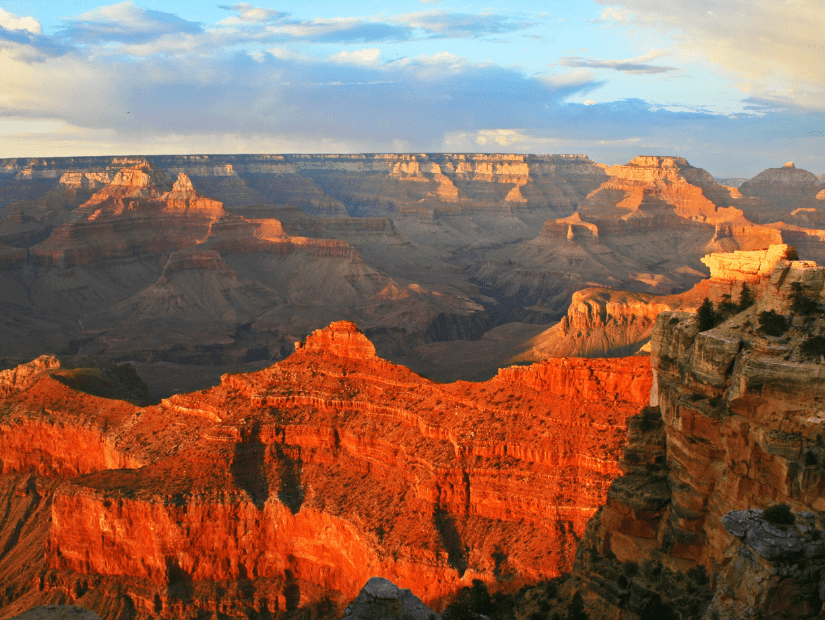
The Grand Canyon is the most popular tourist site in Arizona. Every year over 6 million tourists pay it a visit. The Grand Canyon is located in the northwest part of the state about a three and a half hour drive from Phoenix.
Most people visit the South Rim of the Grand Canyon as this is the easiest section to visit. It is open all year round, while the North Rim is a further four hour drive and is only open from May-October.
Fall is undoubtedly one of the best times to visit the Grand Canyon. I first visited the Grand Canyon in October and noticed how nice and warm it was during the day and how few crowds there were at each of the viewpoints as well.
One of the best things we did on our visit was to hike down into the Canyon on the Bright Angel Trail. The trail takes you through the inner canyon walls and offers stunning and majestic views along the way and you can see the fall foliage on the trees.
–Nicole of American SW Obsessed
8. Yellowstone National Park
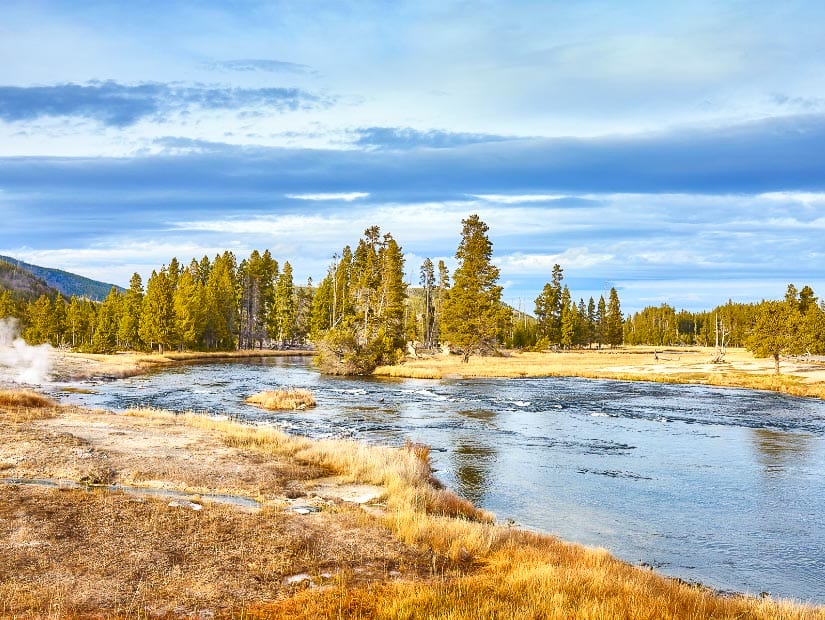
Located primarily in Northwestern Wyoming, mighty Yellowstone is a glittering jewel in the crown of the US National Park system. A menacing supervolcano and volcanic caldera lurk beneath the surface of Yellowstone National Park, but above ground is an astonishing fantasy-like landscape filled with billowing super heated steam, gloopy bubbling mud pots, powerful waterfalls and an abundance of diverse wildlife.
What can’t be missed on a first visit? Old Faithful Geyser, Grand Prismatic Spring, Mount Washington Hike, Hayden or Lamar Valley Wildlife, Grand Canyon of Yellowstone and its impressive Lower Falls.
Fall is a magical time to visit and photograph Yellowstone National Park. Expect cooler temperatures perfect for hiking, beautiful foliage colors, tolerable crowd levels, fiercely unpredictable weather conditions (more fun than it sounds!) and endless wildlife spotting opportunities.
Enormous Bison and bugling Elk herds transition to lower levels as snow begins to fall, while grizzly bears move into higher elevations. Completely fine by us! In the space of just 4 days in Yellowstone, we experienced glorious sunshine, dense fog, freezing toes and a spectacular snowy winter wonderland.With careful planning, Fall can be the best time of year to visit the world’s first and original National Park.
–Mark and Kristen from Where Are Those Morgans?
9. Rocky Mountain National Park

Well known for its wildlife viewing, glacier-fed lakes, and stunning mountain views, Rocky Mountain National Park is right outside Denver, Colorado. Visitors can hope to see black bears, bighorn sheep, and moose! Although its accessibility can vary in fall due to weather, everyone should try to drive the Trail Ridge Road so they can visit the highest altitude visitor center in the country.
RMNP is particularly beautiful in fall because of both its unique fall foliage and the thrilling elk mating season. We loved hiking to Ouzel Falls and seeing the bright yellow aspen trees blazing in contrast to the dark green pine trees; there are groves of aspens sprinkled throughout the rest of the park.
While peak viewing season can vary, it usually has some overlap with the elk mating season when visitors can see male elk duking it out with their antlers. Listening to the elk bugling outside our cabin was a unique experience that our family will never forget!
Before you go, read our tips for visiting Rocky Mountain National Park in order to get the most out of your trip.
–Stephanie of Explore More Clean Less
10. Big Bend National Park

Big Bend National Park is one of the only two national parks in Texas and is by far the most popular. It’s nestled in its namesake, a large southward bend in the Rio Grande along the border with Mexico. There are three topographical regions in the park: the desert, the river, and the mountains.
The mountains house the best hikes in Big Bend, but other activities include rafting down the Rio Grande, relaxing in the hot springs, spending the day in Mexico, and even a fossil exhibit.
We visited Big Bend in August, at the tail end of a sweltering summer. This greatly limited how much of the park we could enjoy. We were able to enjoy hikes and views in the mountains (which are enjoyable year-round) but the popular attractions in the desert, like the Mule Ears Trail, were off the table (or at your own risk of heat stroke!)
This Texas park is ideal in the fall and it’s when I will likely plan my second trip there. Days are cool enough to enjoy the desert but nights aren’t quite so cold that you can’t enjoy camping under the Milky Way. Just avoid Thanksgiving weekend to avoid its busiest weekend.
–Erin Mushaway of Sol Salute
11. Badlands National Park
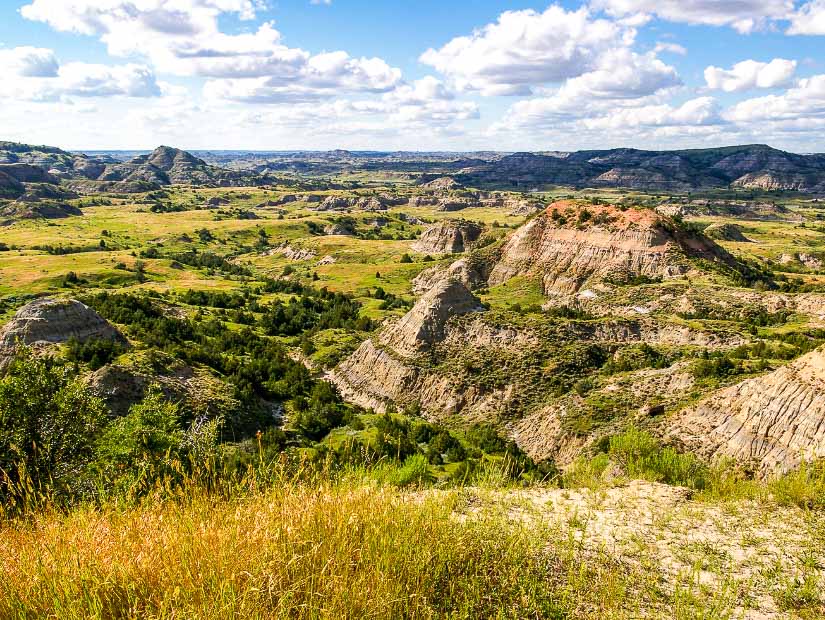
Badlands National Park is one of the top parks to visit in South Dakota. It’s an hour-and-a-half east of the famous Mount Rushmore, the most famous attraction in the state. The park is nestled in the middle of the grassy plains that dominate much of the state.
Badlands are an area of dry terrain with extensive wind and water erosion and minimal vegetation. Though it may not sound like a desirable place to visit, it is incredible to see.
There is no better time to visit the Badlands than on a crisp fall day. If you get there early enough, you can watch the sun make its ascent, painting the park in a palette of stunning hues. Even in the middle of the day, it’s a subtle, almost pastel landscape with unusual shades of color entrapped in the smooth flows of rock.
In the fall, the crowds start to dwindle and you get more of the park to yourself to explore. There are many great hiking trails to enjoy. Wander deep within the park away from the road to get a sense of being part of an age-old process of creating this inspiring landscape.
–Sam from My Flying Leap
12. Great Smoky Mountains National Park
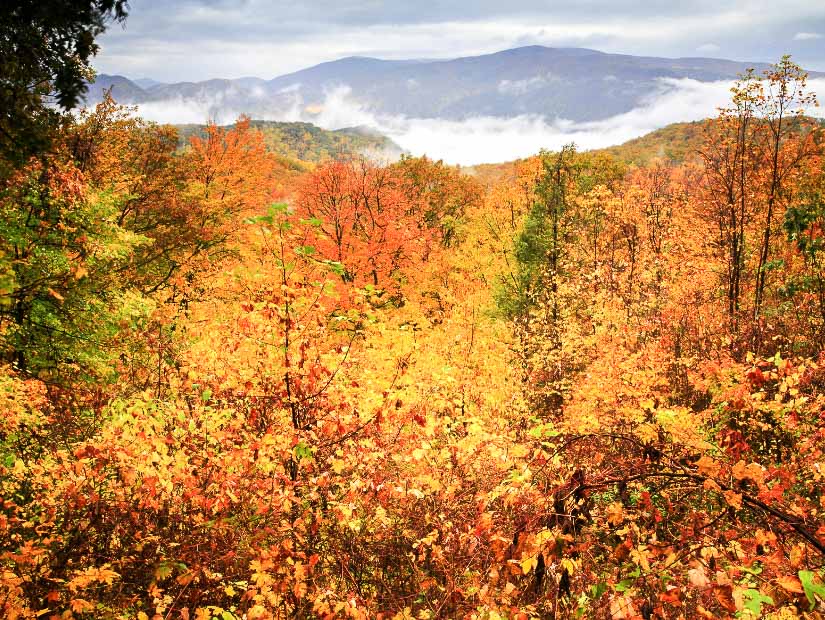
Great Smoky Mountains National Park is the most popular national park in America, averaging around 10 million visitors each year. Located on the border of eastern Tennessee and western North Carolina, it’s just a half-day’s drive away from almost every major city on the East Coast.
The Blue Ridge Parkway, which leads directly to the park’s NC entrance, offers incredible mountain views, a diverse array of wildlife, and quaint little Blue Ridge mountain towns all along the way. There are some 10,000 different species of flora and fauna here, including black bears, deer, raccoons, birds, and much more. Camping, hiking, and fishing, are the most popular things to do here, along with driving the world-renowned Blue Ridge Parkway.
If you want to visit Great Smoky Mountains National Park, fall is arguably the best time to go. Crowds of tourists will be smaller, the weather cooler, and the leaves more vividly colored.
But autumn is also awesome because that’s when the famous Cataloochee Valley elk herd (which was reintroduced back in 2001) is in rut. It’s a magical wildlife display you won’t see anywhere else on the East Coast!
–Bret Love & Mary Gabbett of Green Global Travel
13. Everglades National Park
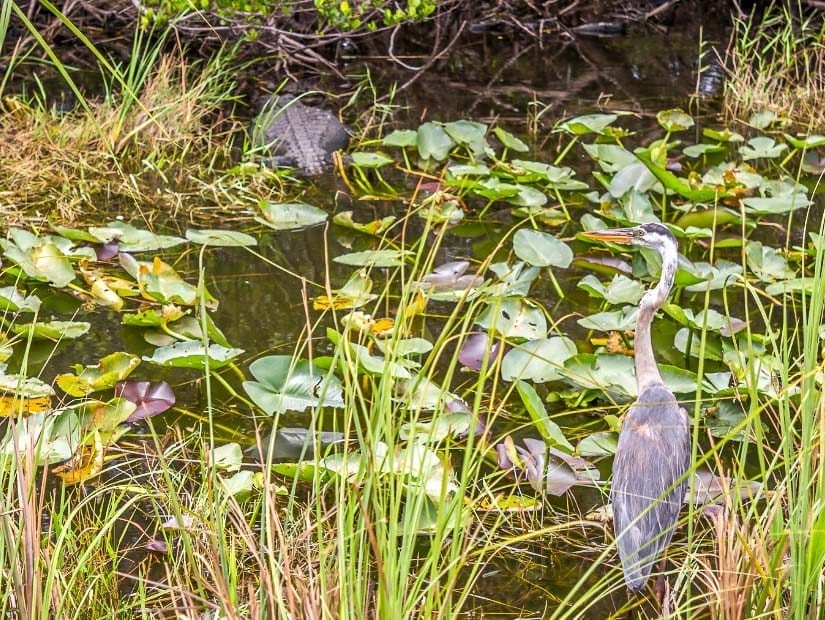
When the first chill blows through the northern United States, Everglades National Park in south Florida is just entering its dry season after months of thunderous summer storms and hurricanes.
The River of Grass is the only sub-tropical wilderness in the United States and a UNESCO World Heritage site that draws outdoor junkies, adventure lovers, and eco travelers to this fragile ecosystem. But there are plenty of things to do in the Everglades such as hiking, fishing, paddling, and other low-impact exploring.
Fall is a great time to visit the Glades when the weather is turning mild — typically a balmy 55-85 degrees Fahrenheit by November. Heading into the dry season is when you can begin hiking to places that have been unreachable on foot during the rainy season.
And best of all, the lack of rain means mosquitoes and no-see-ums keep to themselves and don’t eat you alive. You’re also more likely to see certain wildlife like the American alligator, dolphins, bobcats, black bear, manatees, and deer. Everglades National Park is one of the most underrated and under-visited US National Parks, and with so much wildlife and natural beauty, it should be on every outdoor-lovers bucket list this fall!
–by Lori Sorrentino of Travlinmad
14. Shenandoah National Park

Shenandoah is one of the best national parks on the East Coast and definitely Virginia’s premier park. Located in the Blue Ridge Mountains, Shenandoah covers a long, narrow stretch of land that is mostly forested.
The park is home to many incredible species, including deer and black bears that are occasionally seen wandering through the pristine forests. However, the highlight of the park is Skyline Drive, a road that stretches the 105-mile length of the park.
The drive takes you high up and offers fantastic viewpoints out over the Shenandoah Valley and beyond. Within the park, there is also a stretch of the Appalachian Trail. While the park is beautiful all year, fall offers the unique chance to see the turning of the leaves; as you look out over the valley, the lower hardwood forests turn a beautiful hue of orange, red, and brown.
Within the park, there are 500 miles of hiking trails, and the more temperate climate of fall makes completing the trails far more manageable and enjoyable. As winter in Shenandoah starts to creep in, the mountain tops begin to glisten with snow, and by late fall, Shenandoah becomes a magical winter wonderland.
–Megan of Virginia Travel Tips
15. Acadia National Park
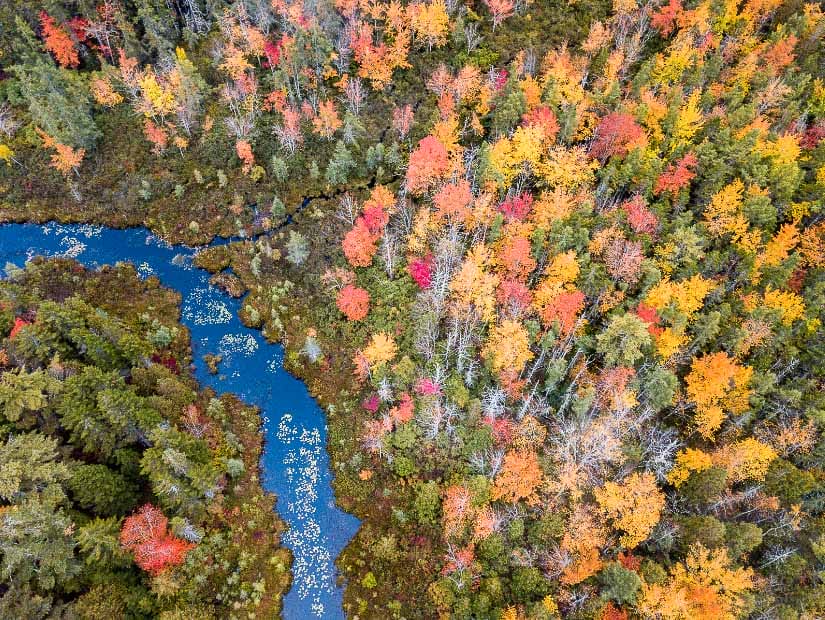
Acadia National Park, located in the coastal islands of Maine, offers a stunning interaction of land and water, making it one of the absolute must-visit places in New England. Known for its granite peaks, rocky coastlines, inland lakes, and pristine forest, Acadia features over 150 miles of hiking trails and over 40 miles of carriage roads.
Acadia was once the hideaway and playground of the very rich who ensured these trails and carriage roads were specifically engineered to enable interaction with nature, and the best possible view. Cadillac Mountain, Thunder Hole, Jordan Lake, and the Bass Harbor Head Lighthouse are some of the favorite places in the park.
Acadia is known as a summer getaway, so in autumn the crowds are gone. Visitors can hike the trails, ride the carriage roads, and drive Park Loop Road on their Acadia National Park itinerary in fall.
Colors throughout the park are vibrant, but a trip to one of the peaks offers expansive views over the brilliant interplay of orange and red leaves amidst the deep green pines, and the blues of the sky and water. These breathtaking views make Acadia one of the best National Parks to visit in fall. Visitors should dress in layers though, as the Atlantic breezes are often chilly.
We hope you found some serious inspiration for where to visit in the United States this fall. If we missed your favorite autumn spot in the US, feel free to tell us in the comments below!
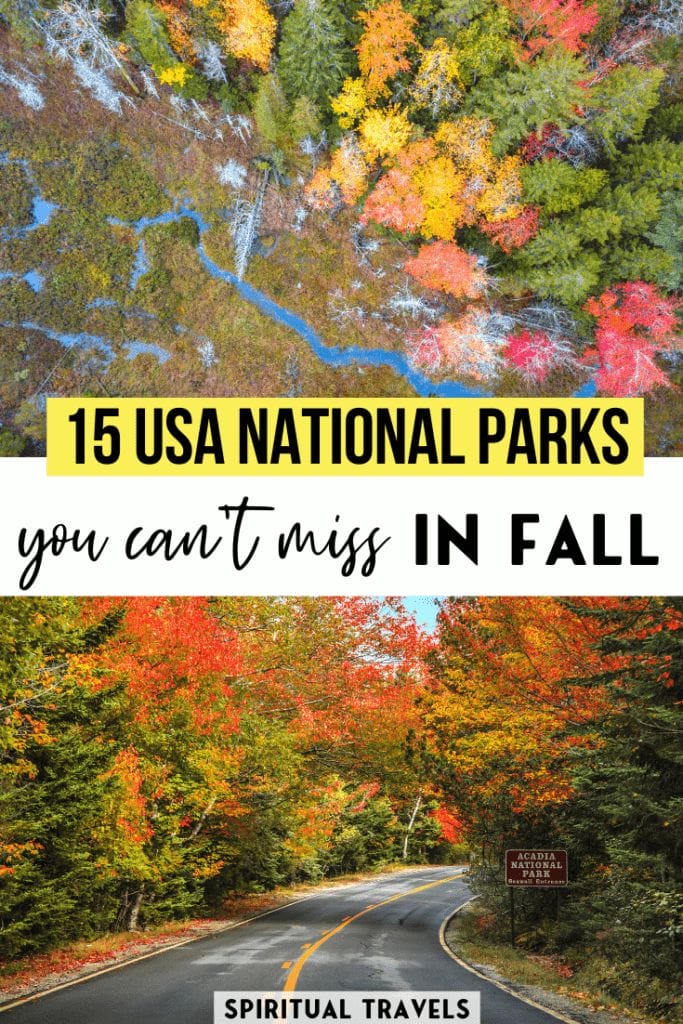

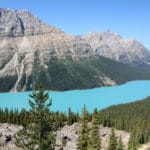
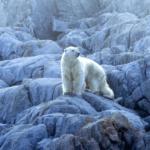

What a great list, excited to get outside this fall!
Thanks a lot. Me too!
We are planning an Amtrak train trip to see some of these National Parks. I can not wait to see Yosemite National Park but on a train ride, they are all going to be beautiful to see. Thanks for the list.